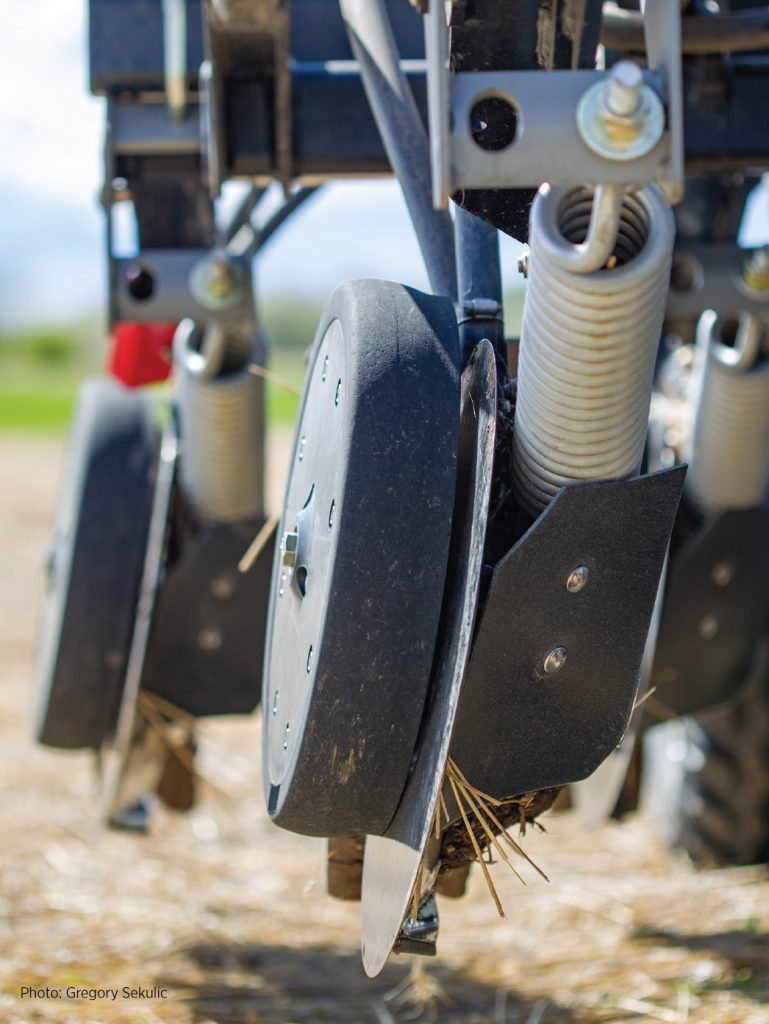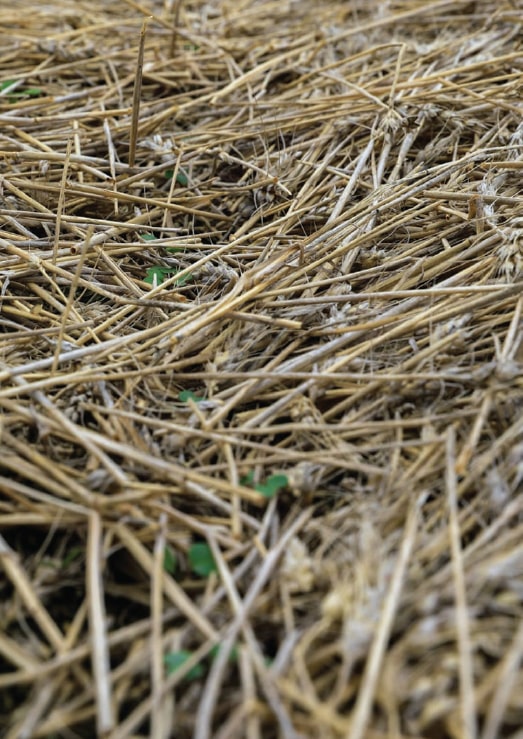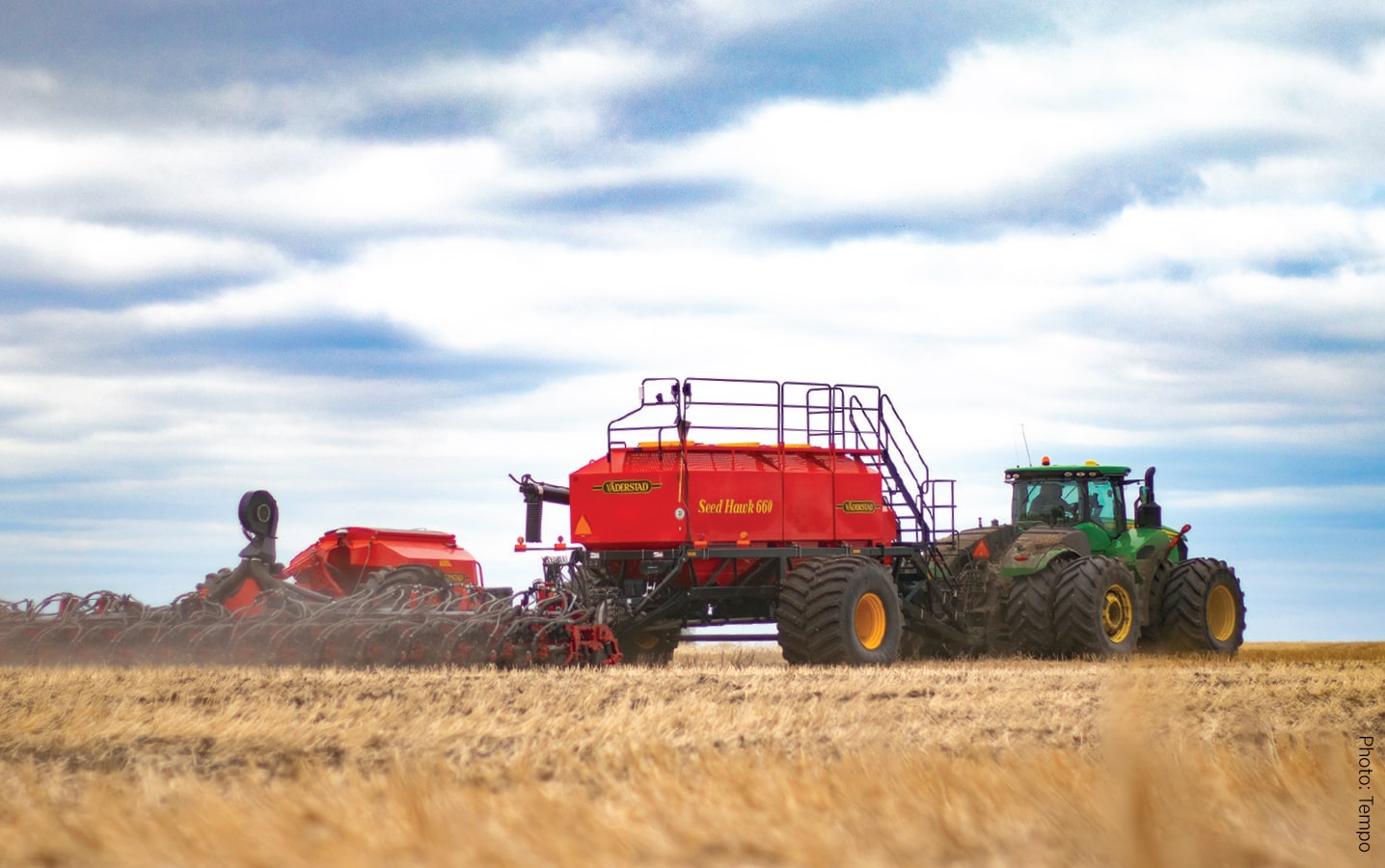Precision planting in no-till systems
Planters are engineered for precise seed depth and seed spacing, and could take canola seed placement to a new level of precision. The challenge for canola growers considering a planter is to justify the cost and maintenance of a second seeding system and to make them work in the no-tillage or direct-seeding systems that are common in Western Canadian agriculture.
Seeding is the most important pass in canola production. Without this pass there is no harvest, and every mistake made at seeding can haunt the crop through the remainder of the growing season. Furthermore, farmers face immense pressure during this time to cover as much ground in a day as possible, while maintaining best management practices surrounding plant establishment. This is the balancing act of seeding. Can planters keep the balance?
Kristjan Hebert has been using precision planters for canola over the past three years on his no-till farm at Moosomin, Saskatchewan. He knows that precision planters require a large capital investment and come with consistent maintenance expenses. It can be a challenge to spread this expense over the whole farm. “Unless the environment where you farm is capable of growing corn, soybean or other established row crops, a precision planter cannot be the only seeding implement on your farm,” Hebert says.

“Our biggest challenge is logistics,” he says. Operating two different types of seeding implement has increased the complexity of their seeding operation: fertilizer, seed, and fuel logistics, as well as implement maintenance and repairs are all different between an air drill and a planter. This warrants unique equipment to deliver or meet the requirements of a planter. Furthermore, if land is farmed across a large geography, implements may be working far apart, further increasing seeding logistic complexity.
The next hurdle is seed placement in a direct-seeded system. Philip Korczak, regional manager with Väderstad, says no-till planting is entirely possible if appropriate hardware is installed to move or break through surface residue. Väderstad, like other planter companies, offers optional row cleaners to help remove crop residues, clumps and stones. However, Korczak says you may have to keep the option open for a tillage pass if your field is too hard from compaction or has too much surface residue due to harvest practices the fall before.
Another challenge with planters, Korczak says, is to maintain optimal depth because of how difficult they can be to push a double disc into no-till heavy soils. If this is a potential issue, he recommends hydraulic weight transfer, which is available on their Tempo planters. By enabling both positive and negative pressure, this feature ensures the best start possible for each type of seed and the specific field soil conditions.
“Unless the environment where you farm is capable of growing corn, soybean or other established row crops, a precision planter cannot be the only seeding implement on your farm.”
North Valley Precision Planting, based out of Homewood, Manitoba, provides solutions to the specific challenges growers often face when using their planters for canola. These challenges can include toolbar performance monitoring, metering, downforce and furrow closing. Manager Carl Havixbeck and product specialist John Fox see individual row downforce, with a product like DeltaForce by Precision Planting, as an important step to manage field variability. They note that soil type, residue cover and soil moisture change throughout a field, which subsequently alters the downforce pressure required for achieve targeted seed depth and good seed to soil contact.
Finally, the nature of canola seed makes it more difficult to achieve the picket fence of plants that we often see in precision-planted corn and soybean fields. In the short distance between the metering wheel and the soil, canola seeds encounter static and friction between the seed and seed tube, vibration from the implement itself and bounce in the seed row – all of which can break up the picket fence.
Korczak says the Tempo planter is capable of successfully planting canola in no-till at seven to eight miles per hour. On traditional vacuum planters, the seed falls freely from the seed meter through the tube and into the soil. When vibrations arise as the speed increases, the seed bounces in the seed tube and much of the precision of the seed meter is lost. The Tempo system uses air pressure to maintain full control of the seed all the way down to the soil.
Bourgault has a new Air Planter option with planter-style singulation to each seed row. It can be put on hoe drills, which are the common no-till seeding tools in Western Canada, and on disc drills.
Curtis de Gooijer, agronomist with Bourgault Industries says, “We can get canola seed to meter out very precisely, but challenges persist in maintaining this until the seed row.”
De Gooijer recognizes that disc drills have additional challenges over hoe drills in no-till conditions in general. “With discs, typically a working of the ground ahead of time is necessary to take care of the trash to decrease the amount of hair pinning,” he says. “Hair pinning is when straw is sent in the bottom of the trench where the seed goes so there is not very good seed to soil contact.”
Harvest practices can help with no-till planting
De Gooijer says disc opener performance in no-till can be improved with harvest practices like stripper headers and higher cut heights to keep more straw standing.
Gregory Sekulic, agronomy specialist with the Canola Council of Canada, has seen good results from a Pillar Laser disc planter working in heavy residue. “Like all discs, it faces the challenge of good seed placement in soils covered with a mat of thick chaff and short straw,” says Sekulic. But at one demo in 2020, the Pillar Laser planter seeded into unharvested abandoned wheat crop with impressive results, he says.

In this unique situation, the straw was long and there was no cover of fresh chaff. It made Sekulic realize that no-till planting can work with a change in harvest practices. “Long, undisturbed straw is easier to work with than fields where the crop was shaved and put through the combine,” he says. That is where cutting high, and possibly using stripper headers, could make a big difference.
A final challenge with planters is fertilizer placement — especially in a no-till one-pass seeding system where the placement of choice is beneath the soil surface. However, many seeding implements and seed openers have been designed to combat this. Seed-row, side- and mid-row banding configurations, as well as combinations of these, are available from many equipment suppliers across Western Canada.
The goal for any canola seeding operation, regardless of the seeding implement used, is uniform plant stand with high seed survival. The tools and technology are available for precision planting in no-till systems, but the logistics of seeding, including time management, input delivery, in-season repairs and maintenance, must be taken into consideration. After reading this article and considering the potential challenges, is a precision planter the right tool for the job on your farm?
If yes, reach out to your equipment manufacturer of choice. Many manufacturers conduct field-scale trials with their equipment and are extremely knowledgeable in this area.
While precision planting of canola is an area of continuing research, technology has addressed many of the challenges for no-till farmers of Western Canada. As always, the many bright minds in our industry have addressed challenges and provided solutions that continue to strengthen canola plant establishment and productivity.





